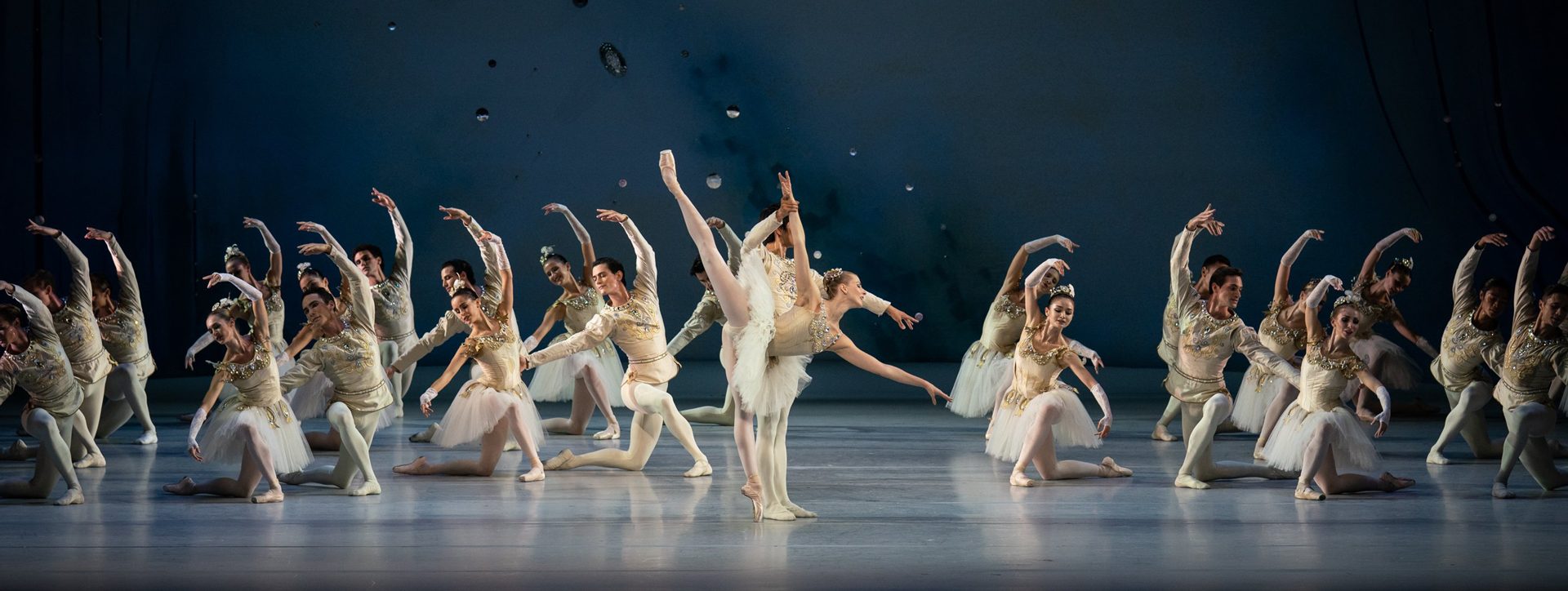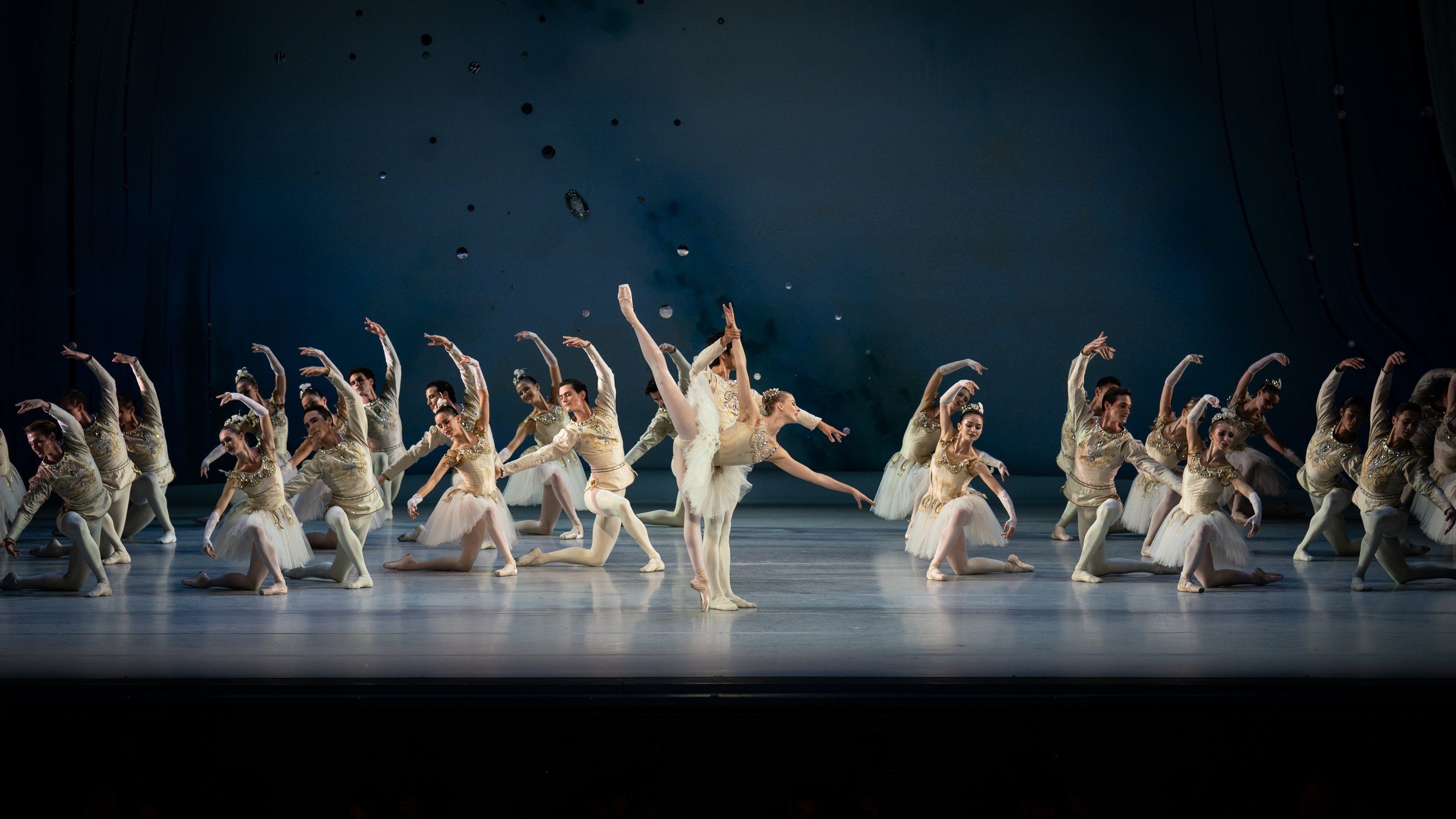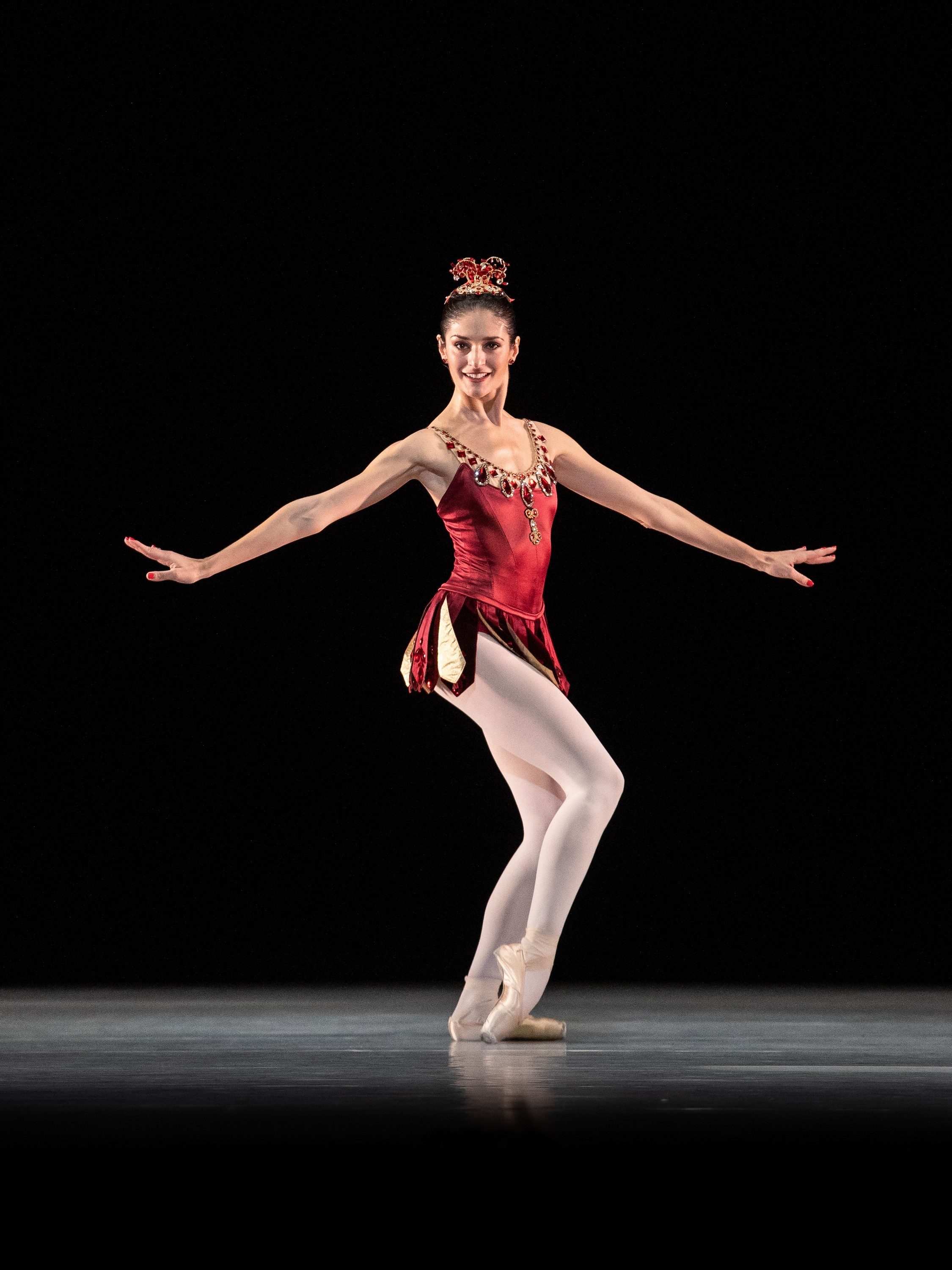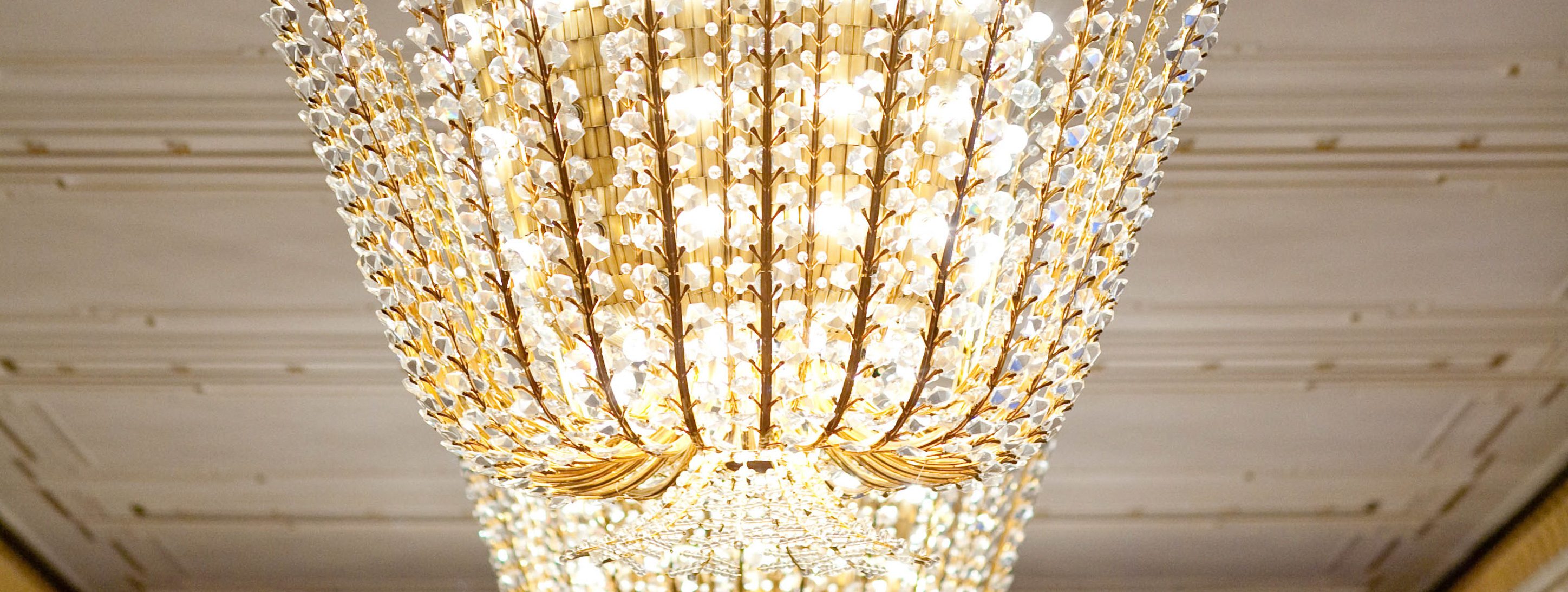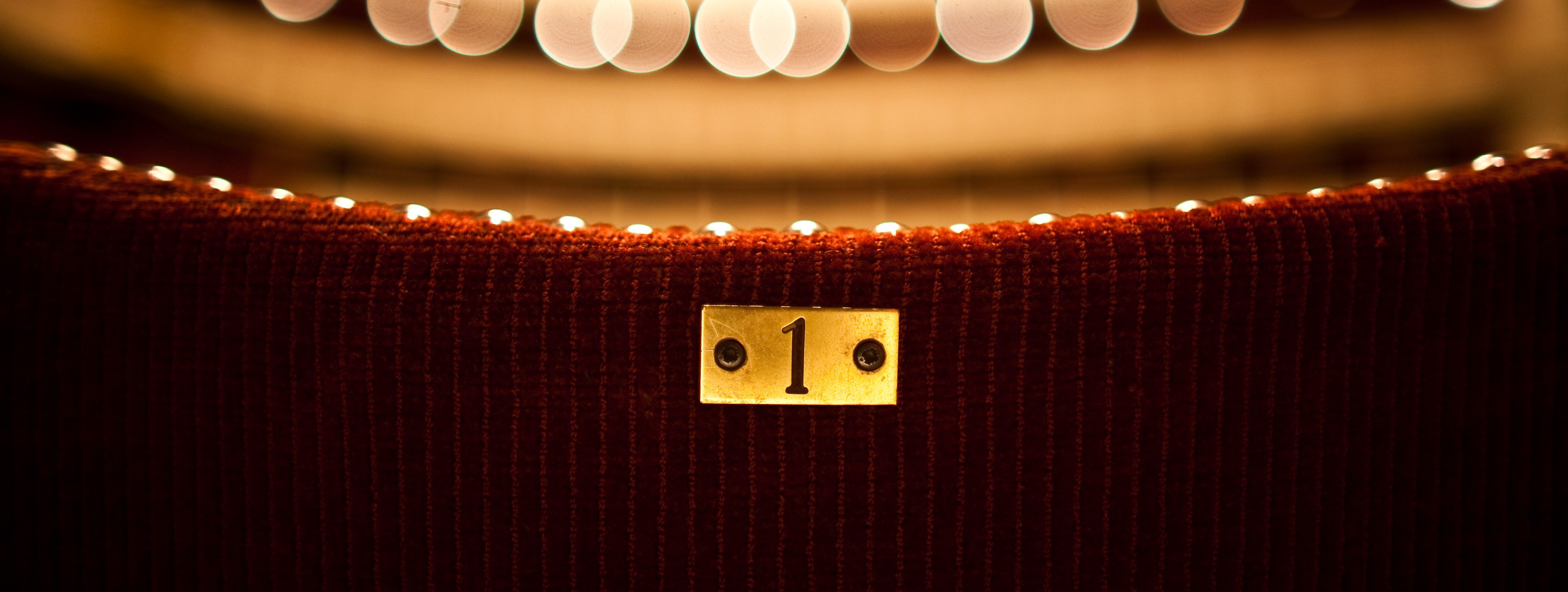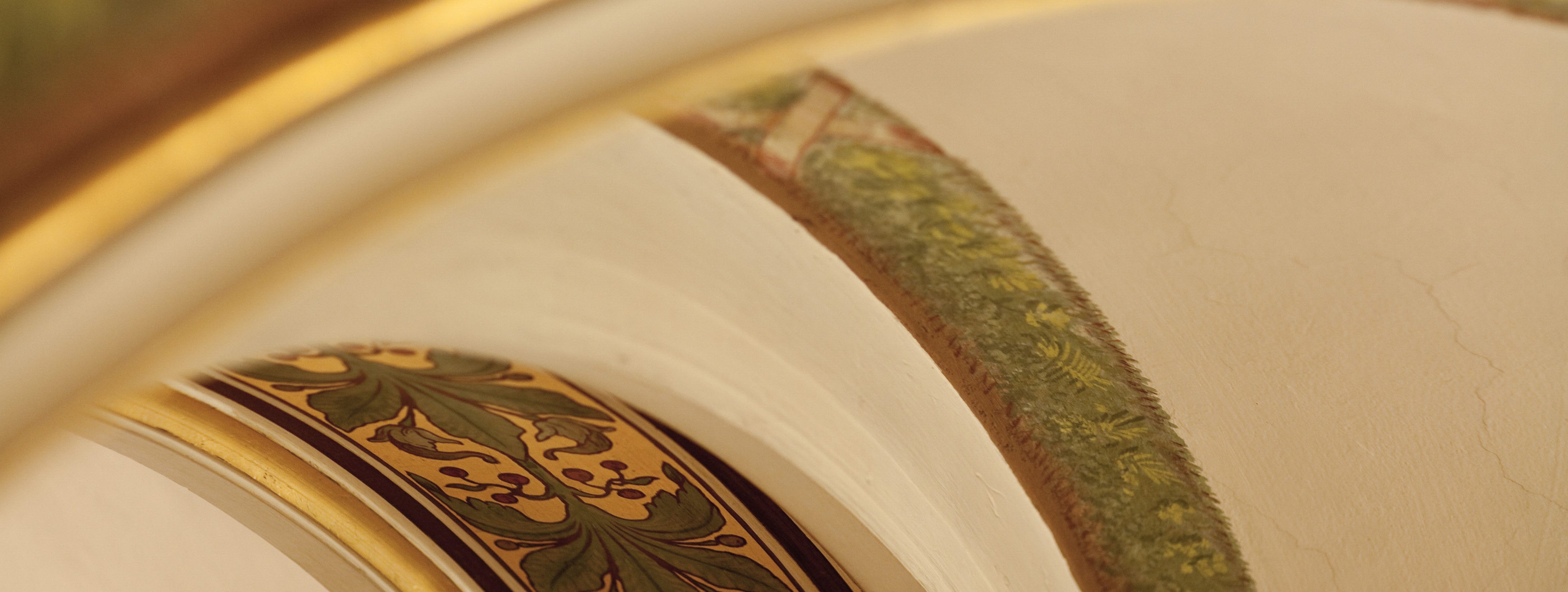About the Production
George Balanchine’s Jewels is considered to be the first full-length ballet without a plot. Inspired by a visit to the Van Cleef & Arpels jewellery store in New York, the choreographer decided to create a work based on the properties of various precious stones for his New York City Ballet in 1967.
In three parts, a different “jewel” – emerald, ruby, diamond – is at the centre of the choreography, in which George Balanchine – a true visionary of the art of dance – combines the tradition of romantic ballet with a modern approach to dance. In unique costumes by designer Karinska, Jewels combines delicate poetry, noble beauty and humorous coolness and is regarded as the “perfect introduction to ballet”.
Although gemstones give this ballet its name and adorn the costumes, Jewels can also be seen above all as Balanchine’s examination of the history of classical ballet and his own artistic journey through life: We experience the ephemeral beauty of early 19th century French Romanticism in Emeralds, which almost echoes ballets such as La Sylphide or Giselle. American, 20th century metropolitan vigour with virtuosic dance and contemporary, jazzy dynamics in Rubies and a homage to late 19th century Russian classicism and the great ballet master Marius Petipa in Diamonds.
With works by Gabriel Fauré, Igor Stravinsky and Pyotr I. Tchaikovsky, Balanchine’s choice of music for his Jewels is anything but arbitrary: “They composed music that the body can dance to. They invented the ground on which the dancers can walk”, is how he describes Stravinsky, with whom Balanchine had an intensive artistic relationship, and Tchaikovsky as the most important ballet composers.
